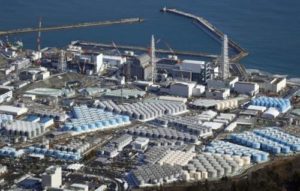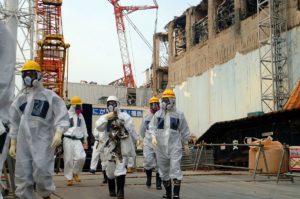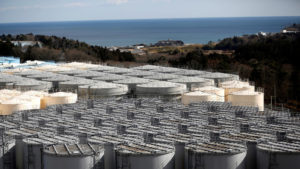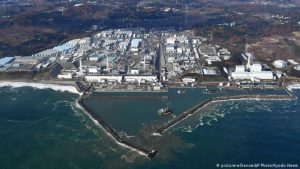
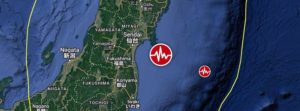
Teo Blašković – March 16, 2022
A major earthquake registered by the Japan Meteorological Agency (JMA) as M7.4 hit near the coast of Fukushima Prefecture at 14:36 UTC (23:36 JTC) on March 16, 2022. The agency is reporting a depth of 60 km (37 miles). USGS is reporting M7.3 at a depth of 33 km (20 miles), EMSC M7.2 at a depth of 80 km (49 miles). The quake was preceded by M6.4 at 14:34 UTC at a depth of 56 km (35 miles).
The epicenter was located about 66 km (41 miles) ENE of Namie (population 21 866), Fukushima and 96 km (59 miles) SE of Sendai (population 1 063 103), Miyagi, Japan.
There are about 1.8 million people living within 100 km (62 miles).
JMA has issued a Tsunami Advisory for the Fukushima and Miyagi prefectures, with waves up to 1 m (3.3 feet) expected. A Tsunami Forecast is in effect for most of Japan’s eastern coastal areas.
2 046 000 people are estimated to have felt very strong shaking, 3 200 000 strong and 7 379 000 moderate.
The USGS issued a Green alert for shaking-related fatalities. There is a low likelihood of casualties.
A Yellow alert was issued for economic losses. Some damage is possible and the impact should be relatively localized. Estimated economic losses are less than 1% of GDP of Japan. Past events with this alert level have required a local or regional level response.
Overall, the population in this region resides in structures that are resistant to earthquake shaking, though vulnerable structures exist. The predominant vulnerable building types are heavy wood frame and reinforced/confined masonry construction.
Recent earthquakes in this area have caused secondary hazards such as tsunamis, landslides and fires that might have contributed to losses.
Updates
The earthquake has left 4 people dead and more than 160 injured. (Mainichi)
The quake caused power outages in northeastern and eastern Japan, affecting a total of more than 2.2 million households, including some 700 000 in Tokyo. Power was later restored to most of the affected citizens.
The country’s nuclear regulator said data show no abnormalities with reactors and facilities at the Fukushima Daiichi nuclear power plant, although the cooling system for the spent fuel pools at the No. 2 and No. 5 reactors temporarily stopped. Cooling systems for spent fuel pools at the Fukushima Daini nuclear power plant and the Onagawa nuclear plant in Miyagi were also affected before recovering.
A Tohoku Shinkansen bullet train derailed between Fukushima Station and Shiroishizao Station, but all 78 passengers and crew members aboard were unharmed, according to East Japan Railway Co.
Relatively small tsunami waves were observed at Ishinomaki port in Miyagi and other locations.

